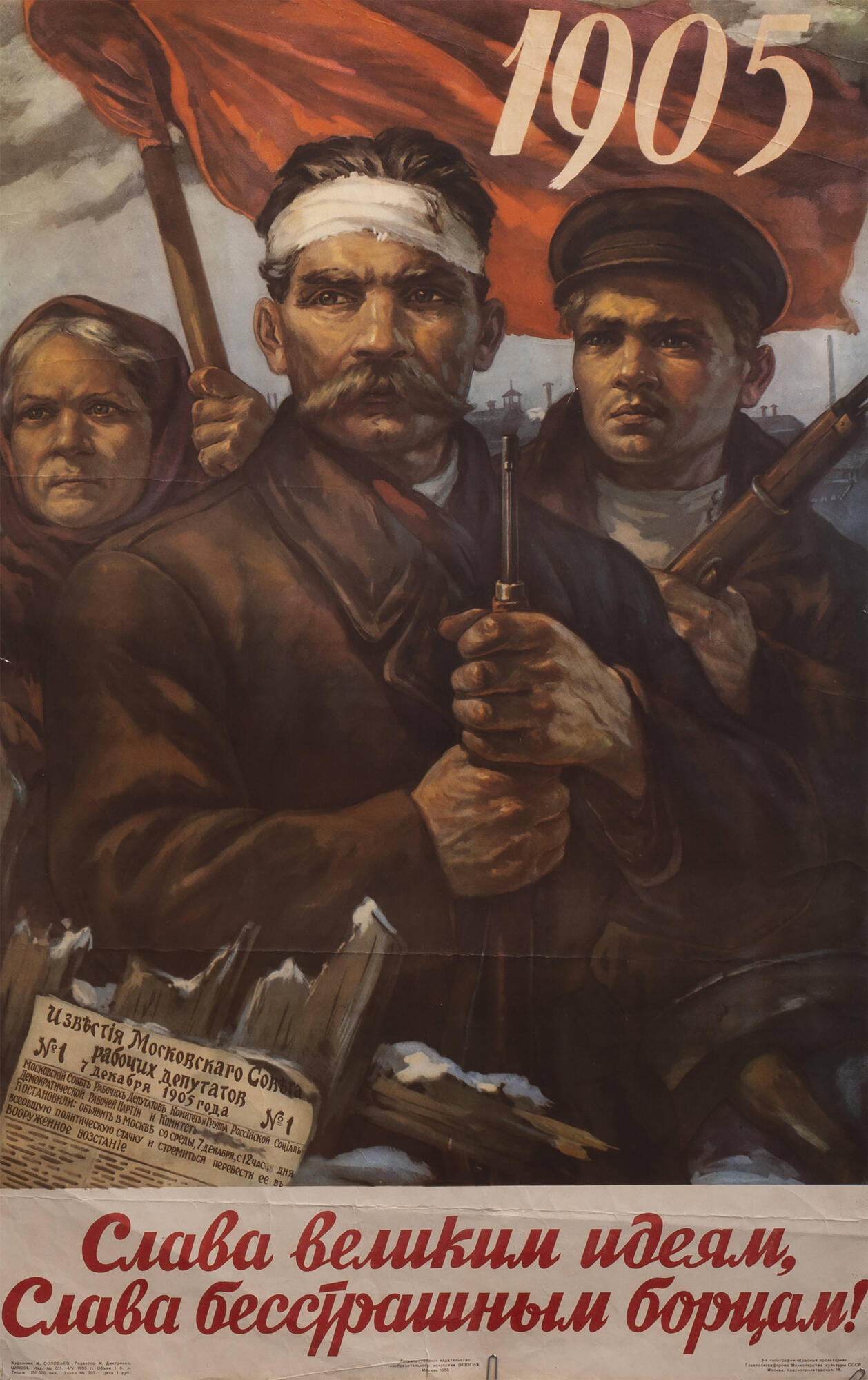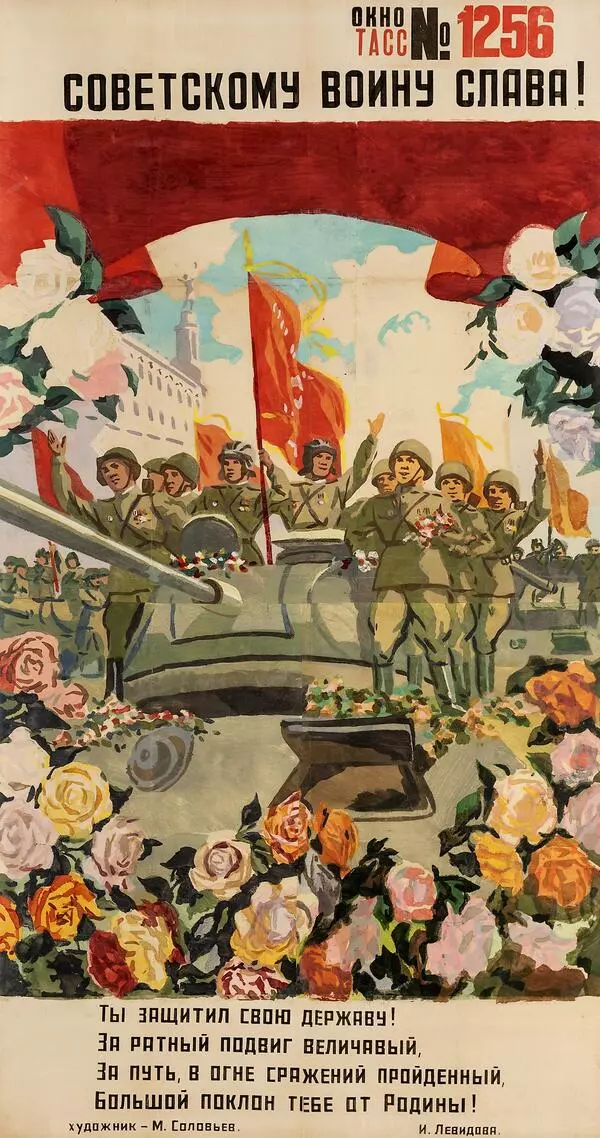Soviet posters served as visual aids aimed at explaining a particular issue, such as the attitude of the Soviet authorities to current events, in an accessible form. Together with radio and newspapers, they were means of propaganda, influencing people’s consciousness and mood in order to induce them to engage in political or other activities.
The content of the Soviet posters changed as the USSR developed over time, although the messages they conveyed encompassed a combination of universal values (freedom, social justice), patriotism, educational components, calls for a healthy lifestyle, and so on. The post-war posters as a whole covered a wide range of different topics of socio-political nature. A large section of postwar posters is dedicated to the Communist Party, the propaganda of its main political slogans, and the leader of the Party, V. I. Lenin. The theme of struggle for peace and might of the Soviet army is revealed with a new fervor. The theme of labor flourished. On the whole, the Soviet political posters of the post-war period deepened the realistic gains made by them earlier.
The main focus in the work of the poster artists was on the image of the Soviet person. Workers, peasants, the military, the leaders of the USSR and the great figures of the time were still the protagonists. At the turn of the 1960s the so-called austere style emerges, with artists building on the poster art of the 1920s–30s. Interestingly enough, the typical hero of the austere style is a person who needs no motivation from the outside, who is not influenced by the general ideology but acts within its framework.
The artist who painted the poster, Mikhail Mikhailovich Solovyov, was a Soviet graphic artist, known for his socio-political posters. He began his career as a painter, studying under I. I. Mashkov and P. P. Sokolov-Skal. During the war he actively worked in “TASS Windows”.
In the postwar period the artist worked in the genre of socio-political posters. He is an Honored Artist of the RSFSR. He collaborated with the publishing houses “Fine Art”, “Izogiz”, “Plakat”, “Agitplakat”. He was a regular participant of foreign, all-Union and regional art exhibitions. Since 1933 Solovyov was member of the Union of Artists of the USSR. His most famous posters are “Glory to the Defenders of Moscow!” (1944), “Work well — yield bread!” (1949), “The Machine Finished Working — Take Care of it!” (1958), “Peace to the World!” (1960), “Glory to the Soviet Army!” (1966), “On Guard of Peace” (1972), “Safeguarding the Peace of My Home Country” (1978).
The content of the Soviet posters changed as the USSR developed over time, although the messages they conveyed encompassed a combination of universal values (freedom, social justice), patriotism, educational components, calls for a healthy lifestyle, and so on. The post-war posters as a whole covered a wide range of different topics of socio-political nature. A large section of postwar posters is dedicated to the Communist Party, the propaganda of its main political slogans, and the leader of the Party, V. I. Lenin. The theme of struggle for peace and might of the Soviet army is revealed with a new fervor. The theme of labor flourished. On the whole, the Soviet political posters of the post-war period deepened the realistic gains made by them earlier.
The main focus in the work of the poster artists was on the image of the Soviet person. Workers, peasants, the military, the leaders of the USSR and the great figures of the time were still the protagonists. At the turn of the 1960s the so-called austere style emerges, with artists building on the poster art of the 1920s–30s. Interestingly enough, the typical hero of the austere style is a person who needs no motivation from the outside, who is not influenced by the general ideology but acts within its framework.
The artist who painted the poster, Mikhail Mikhailovich Solovyov, was a Soviet graphic artist, known for his socio-political posters. He began his career as a painter, studying under I. I. Mashkov and P. P. Sokolov-Skal. During the war he actively worked in “TASS Windows”.
In the postwar period the artist worked in the genre of socio-political posters. He is an Honored Artist of the RSFSR. He collaborated with the publishing houses “Fine Art”, “Izogiz”, “Plakat”, “Agitplakat”. He was a regular participant of foreign, all-Union and regional art exhibitions. Since 1933 Solovyov was member of the Union of Artists of the USSR. His most famous posters are “Glory to the Defenders of Moscow!” (1944), “Work well — yield bread!” (1949), “The Machine Finished Working — Take Care of it!” (1958), “Peace to the World!” (1960), “Glory to the Soviet Army!” (1966), “On Guard of Peace” (1972), “Safeguarding the Peace of My Home Country” (1978).




